Our night by the side of the road passed by undisturbed. Not even the friendly armadillo troubled us in our slumber and we woke early next morning to the sound of birdsong and the occasional passing pick-up which seemed not in the least bit interested in what we were doing. Then, just a few minutes before we’d finished packing away the tents, a large SUV came along, did a U-turn about 30 metres in front of us and sat there facing away with the brake lights on. No-one got out, so we just finished up and cycled away. Was it the landowner making sure we’d left the premises? We’d never know.
A few hundred yards down the road and we came upon the cause of the barking we’d heard last night. Two giant shaggy white Great Pyrenees dogs were yelping at each other from opposite sides of the highway. The one to our left was protecting a flock of black headed sheep, presumably from coyotes or mountain lions, since most of the wolves in Texas were exterminated long ago.
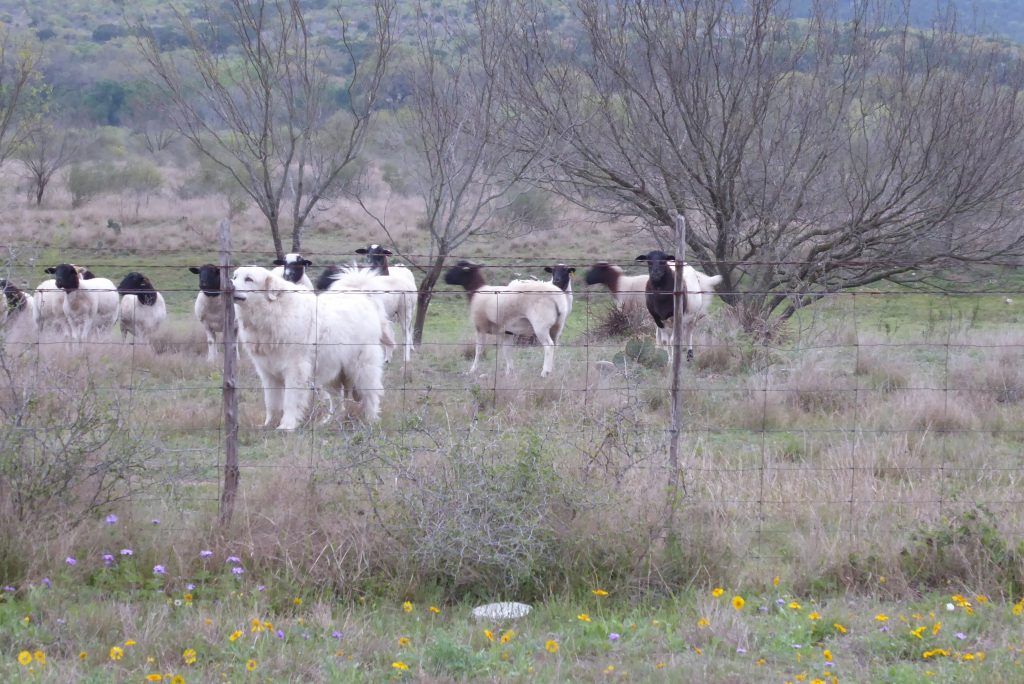
We were still in ranch country, populated with the occasional sightings of deer and criss-crossed by dry river valleys, their white gravel beds thankfully for us, devoid of water. Fortunately, due to the extra miles we cycled last night searching for a suitable place to camp, it was only 25 miles, and mostly downhill, before we arrived in Brackettville.
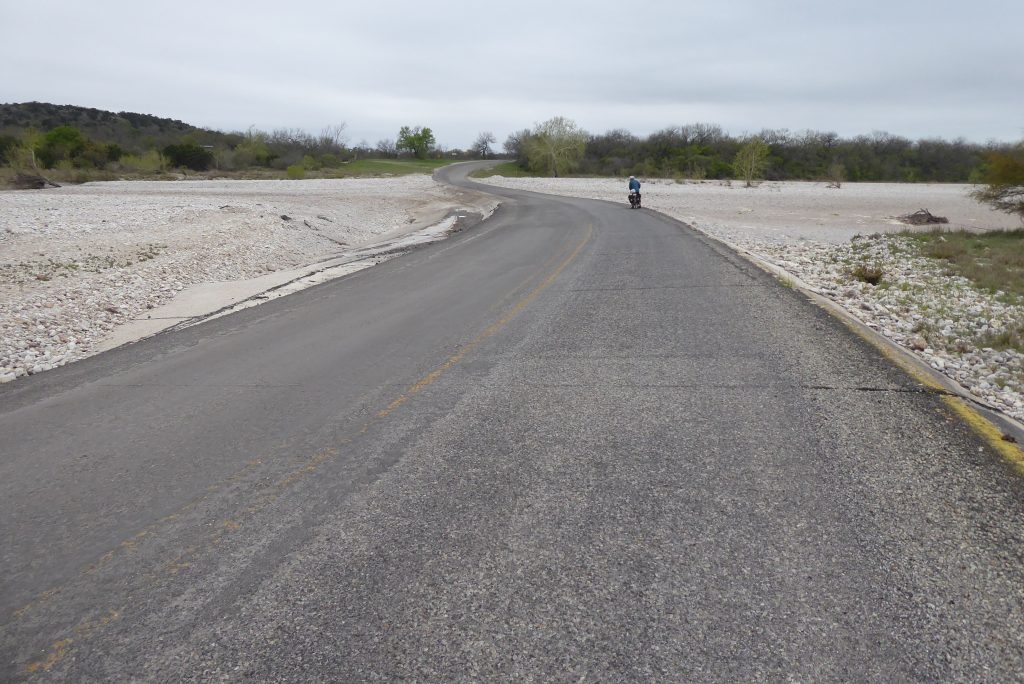
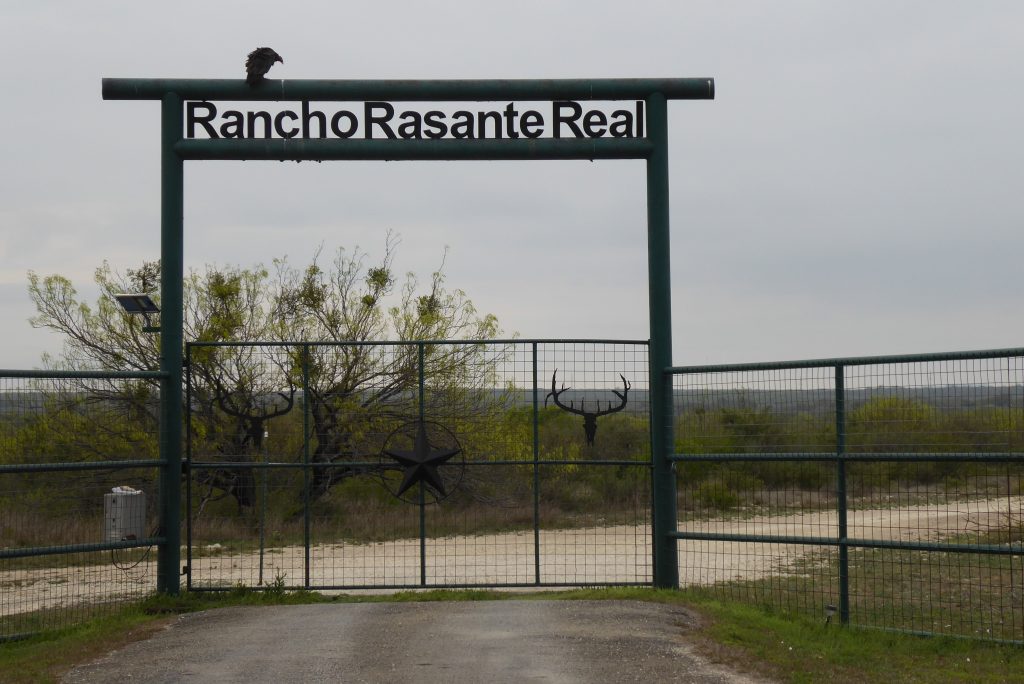
Founded in 1852, Brackettville grew quickly during the 19th century due to the growth of the garrison at nearby Fort Clark, it’s purpose being to fight the Indian Wars. For quite some time it was also the base for the Buffalo Soldiers, a name given by Native Americans to the African Americans who fought in the Indian conflict.
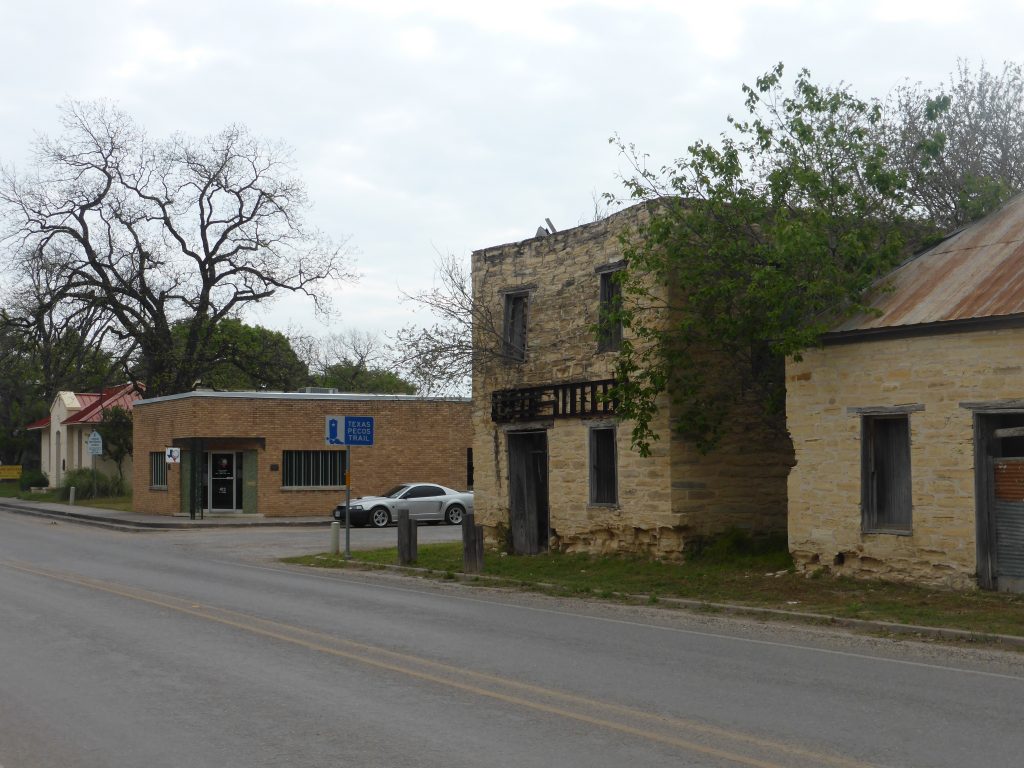
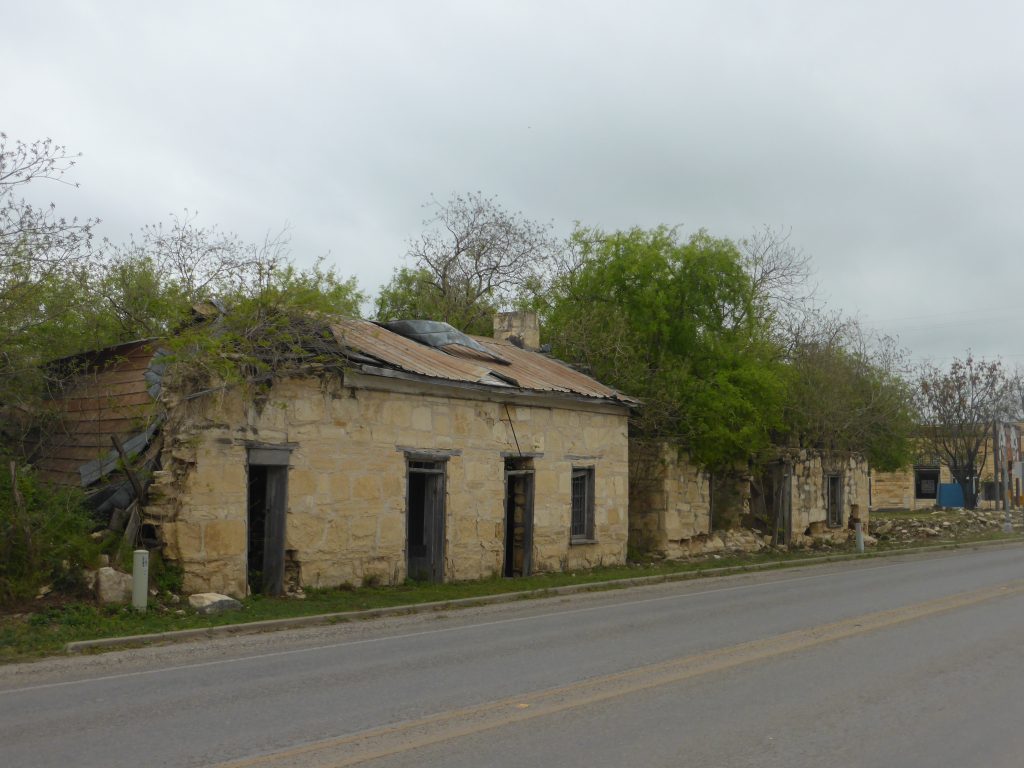
The town certainly looked like it had seen better times and the old stone buildings on St Ann Street were in ruins. After all the historical markers we’d spotted cycling across Texas it was surprising to see that these genuinely old properties had been left to fall into decay.
All the money seemed to have gone on creating Fort Clark Springs, a 2700 acre ‘gated resort and leisure living community’ on the edge of town, complete with a spring fed swimming pool, RV site and motel built inside the old Fort Clark barracks.
“Like a river making its way to the sea, the old fellow seemed to have mellowed over the last thousand miles”.
We tried without success to find the most popular place for breakfast but our truck-counting litmus test failed and we found ourselves sitting in the local gas station eating breakfast tacos. Completely forgetting how insubstantial they can be, we had to go back for round two.
Terry was about to pay, when an elderly man next to him, who had just paid his bill, said that he’d also covered for our food as well. How nice is that!? We hadn’t even spoken to him. I think he had just see our bikes outside and heard our accents.

We then met up with an old friend from our days in Florida, the 90. Like a river making its way to the sea, the old fellow seemed to have mellowed over the last thousand miles. The traffic was barely a quarter of what it had been on the panhandle and although the road surface wasn’t brilliant, we were blessed with a tailwind which pushed us onto Del Rio, our intended night stop at break-neck speed. It was great cycling and even on the uphills Terry found himself dancing on his pedals like Marco Pantani or Mario Cipollini in sheer delight … albeit a little bit slower than they would have been.
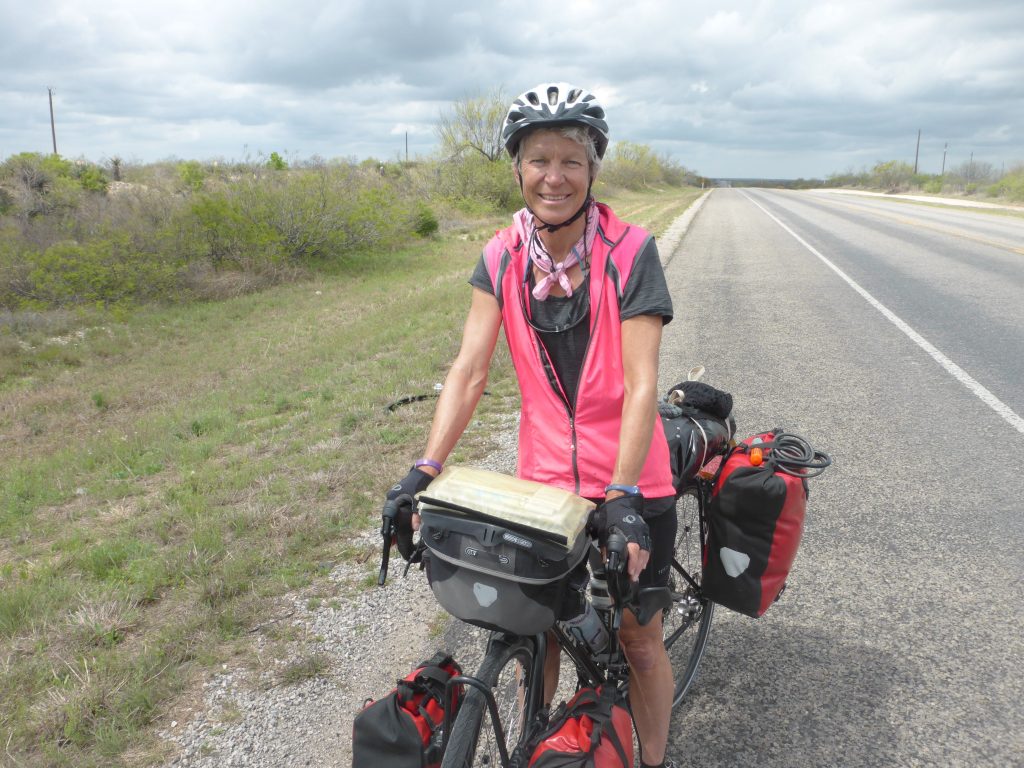
About fifteen miles out from Del Rio we crossed paths with Susan from Flagstaff, Arizona. She was cycling to Florida and then planned to ride up to Virginia to join the TransAm. Like us she’d seen very few riders on the Southern Tier route, but had come across John from Boston who we’d last seen in Morganza in Louisiana. It turned out he was still going strong, credit card touring across the country and making good time.
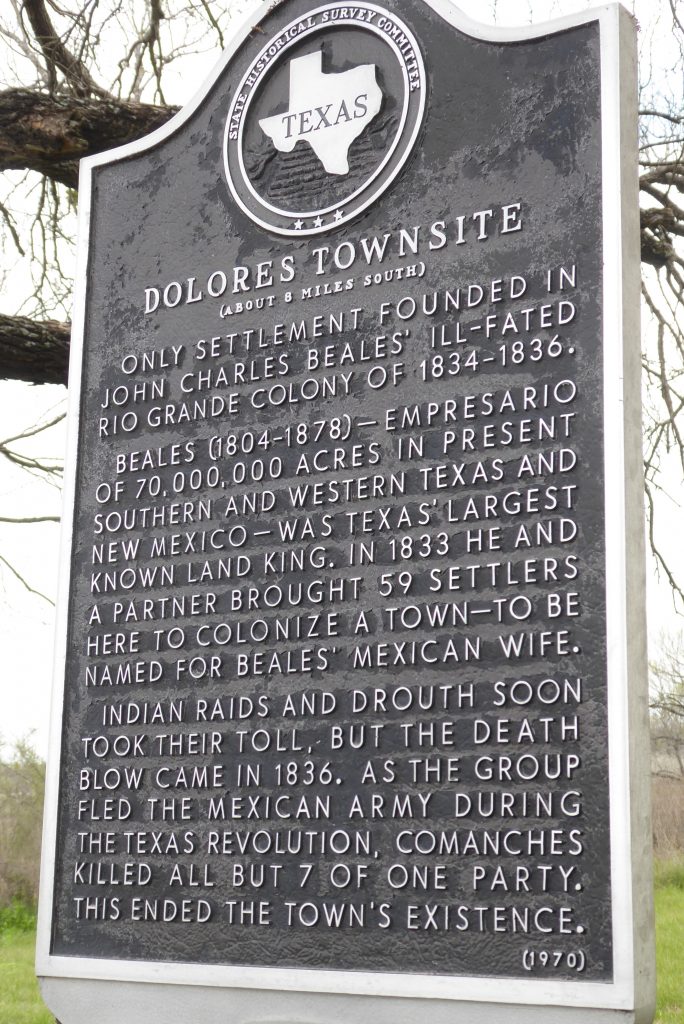
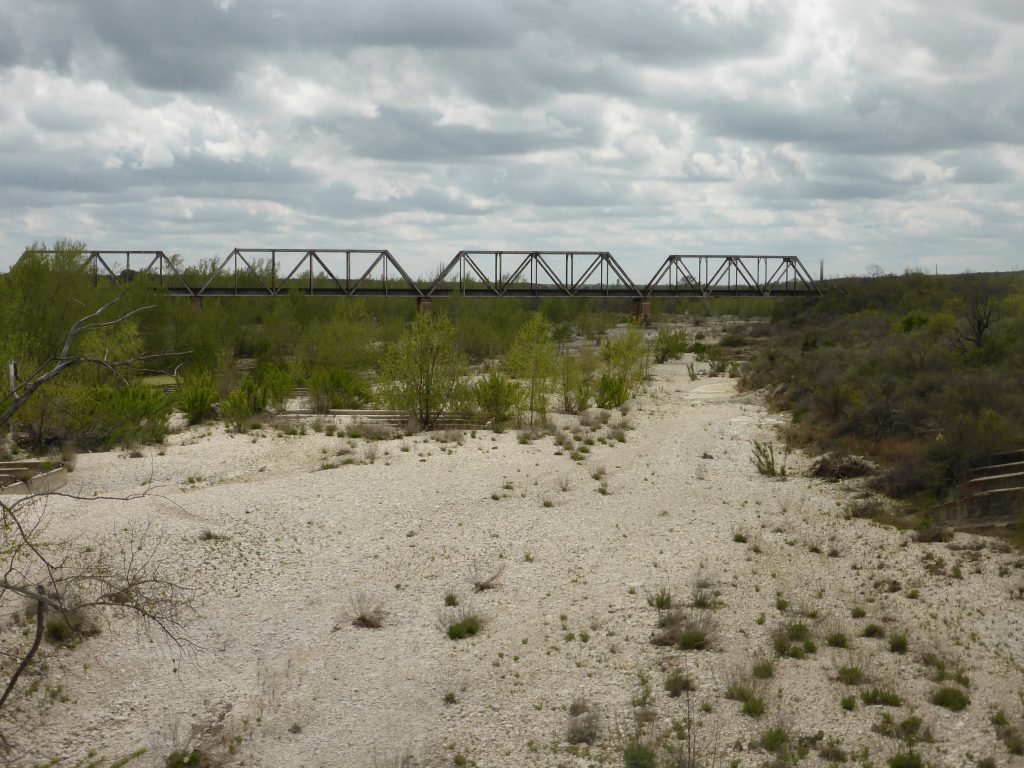
About five miles outside of Del Rio you pass beside the Laughlin Air Force Base. Created by the U.S. Army Air Corp in 1942, the Laughlin Army Air Field, as it was then, started life as a B-26 Marauder and Douglas A-26 Invader flight training school. Seventy seven years later it’s still training military pilots and since the mid 1950s silver wings have been pinned on nearly 21,000. Today the base flies the T-6 Texan II, the T-38C Talon and the T-1A Jayhawk. As luck would have it a flight of Talons were returning from their duties and flew right above our heads onto the airstrip.
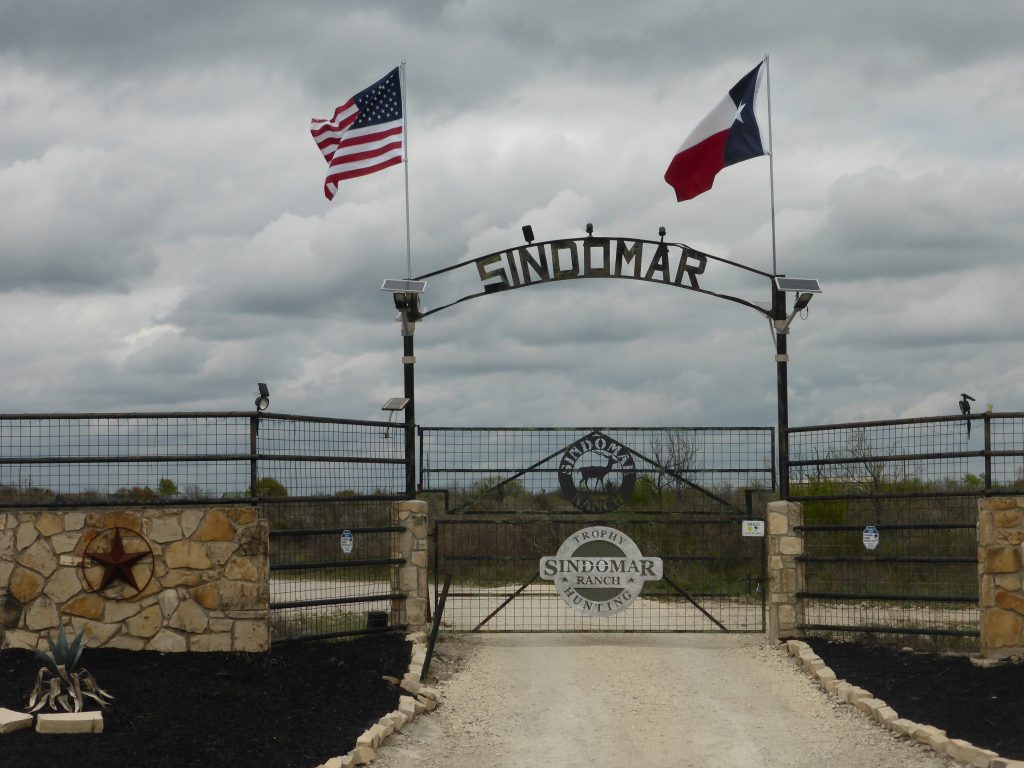
I’ll let Terry explain what happened next: “Paul wet himself with excitement as he filmed endless planes coming and going. I cycled on as I wasn’t that interested in the hardware and the wind was due to turn around, with rain later. Our golden rule is if you’re in front, you must stop and wait at any junction that requires turning off the road you’re on. So I cycled on until we needed to turn right, just before Del Rio, and then sat prominently outside a McDonald’s to wait for him”.
Terry’s right. I was excited, althought I didn’t quite wet myself. The aircraft looked spectacular and I just couldn’t help myself filming landing after landing. I completely lost track of time – and then Terry. I rode a mile further up the road. There was no sign of him at the historical marker. As I continued my concern grew and my logic faded. Soon I found myself cycling up the slipway of a major highway going in the wrong direction. It was the first time we’d been so far apart since the Jane Mansfield incident just before New Orleans.
“Oh well, if you want to get soaked ogling at the fly-boys I’m not hanging around”.
Eventually I managed to back-track onto the 90. We know each other so well by now that I knew to the letter what must have gone through Terry’s mind:
“Bloody idiot! They are only planes and they all look the same. Has he not noticed they are flying through ever darkening skies? It’s going to rain you bloody idiot. Oh well, if you want to get soaked ogling at the fly-boys I’m not hanging around. See you in (Del) Rio”.
By the time I reached the outskirts of town it was 2.30pm and my Garmin had clocked a few miles short of 60. There, on a major intersection I found him sitting patiently outside a McDonalds, bless him. “Lucky it’s not raining,” he muttered. In response I did what anyone would have done after keeping a friend waiting – I went inside and came out with two huge strawberry milkshakes smothered in chantilly cream. Amazingly, as we sucked greedily on our straws, Terry revealed he’d never had a Maccy D’s shake before. He never ceases to surprise me.
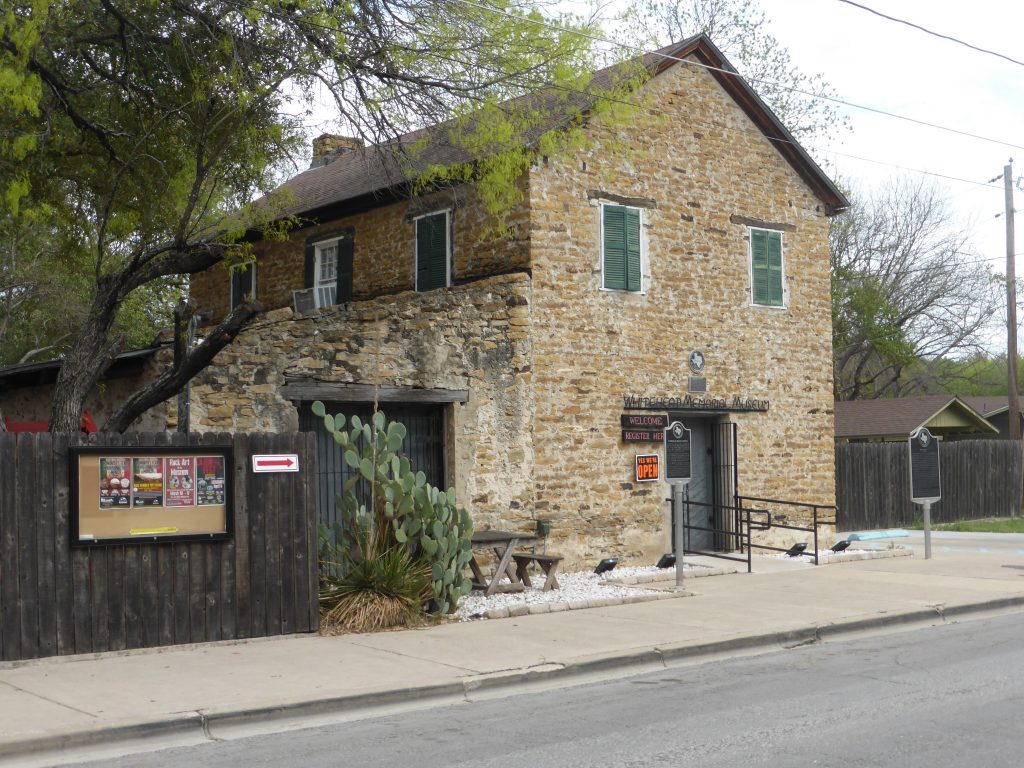
We rode on a quick whistlestop tour of Del Rio, heading into the old town, and even considered going into the local museum, which detailed the life of the notorious saloon-keeper and Justice of the Peace Judge Roy Bean. But after several nights of camping and without washing we were smelling a bit ripe, so we decided a laundromat was more pressing, as was a bike shop where we bought new chains for the second half of our trans-continental journey.
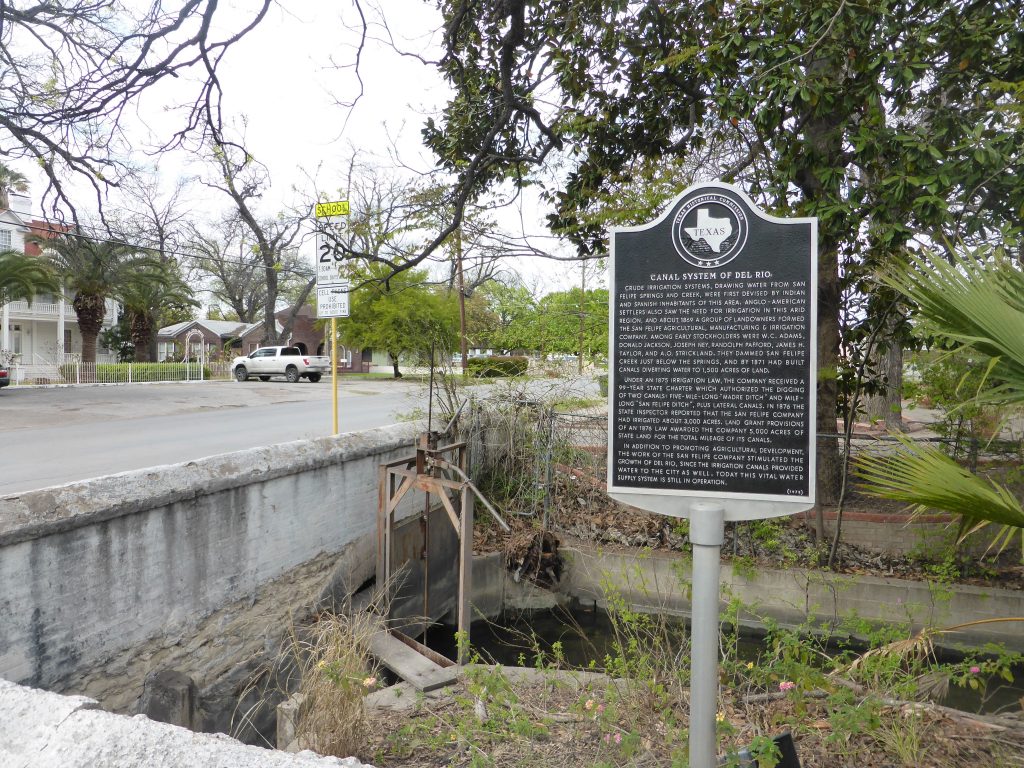
Cycling up Veterans Boulvevard we checked into our Motel 6 (fast becoming our favourite hotel) and were delighted to find it had its own laundry, so as our clothes span we swapped our tyres around. The back tyres always take a lot more punishment than the front and were visibly worn. Chains can also stretch and total the sprocket teeth, so this was all good preventative work – overseen of course by the multi-talented Terry while I blundered in the background.
“Hey, America! What’s wrong with putting in zebra crossings and Belisha beacons”?
Our first shower in three days was right nice. Clean clothes and clean us, we went in search of sustenance. Finding a Pizza Hut with a salad bar just over the highway was an added bonus, even if it did mean dicing with death trying to get there. A shared veggie pizza and plenty of fruit and veg later, we were ready to crash, although the six lane highway we had to run back across in the dark seemed to have other ideas. Where’s a lollypop person when you need them? Hey, America! What’s wrong with putting in zebra crossings and Belisha beacons?
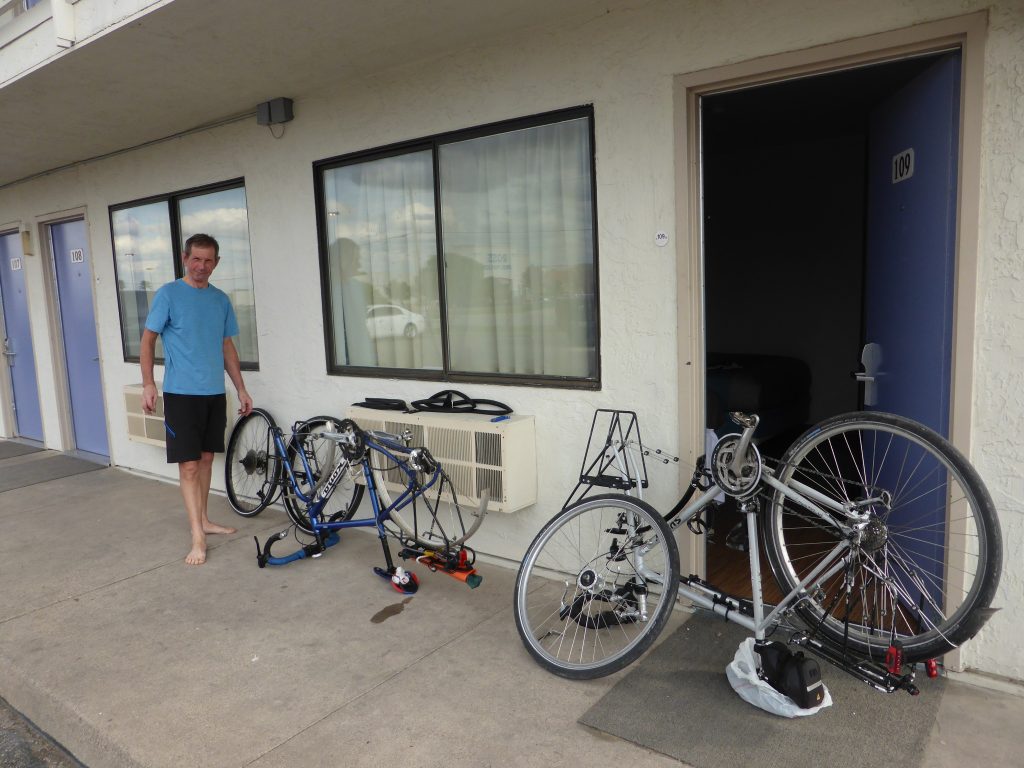
Today’s miles: 59.10
Total distance since Anastasia State Park: 1,640.46
